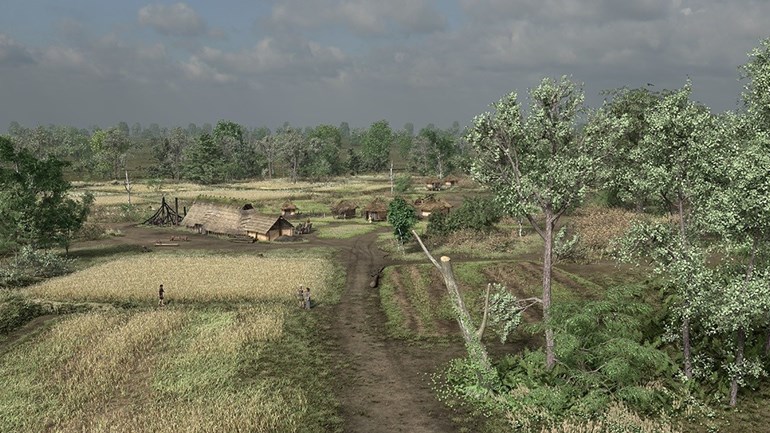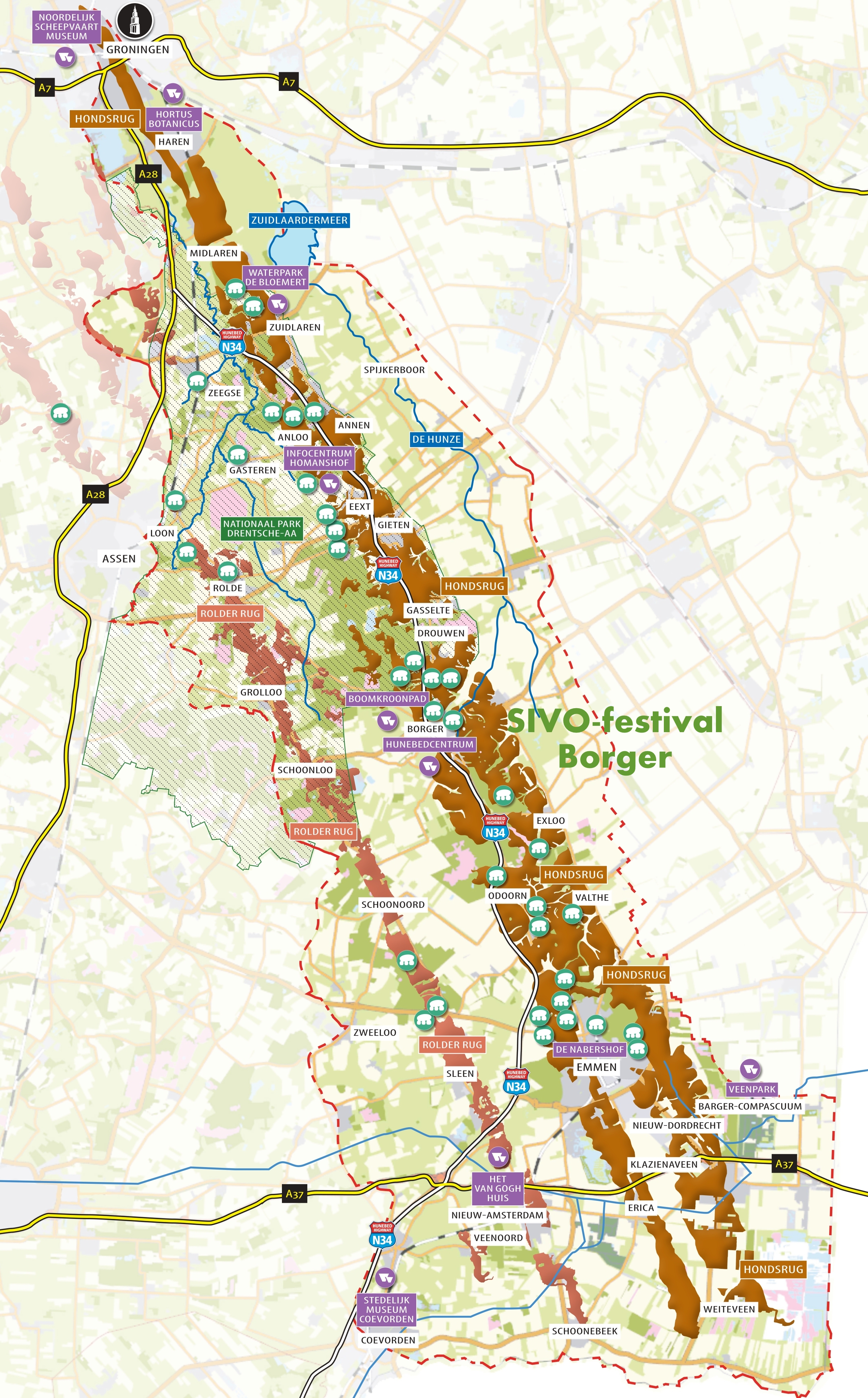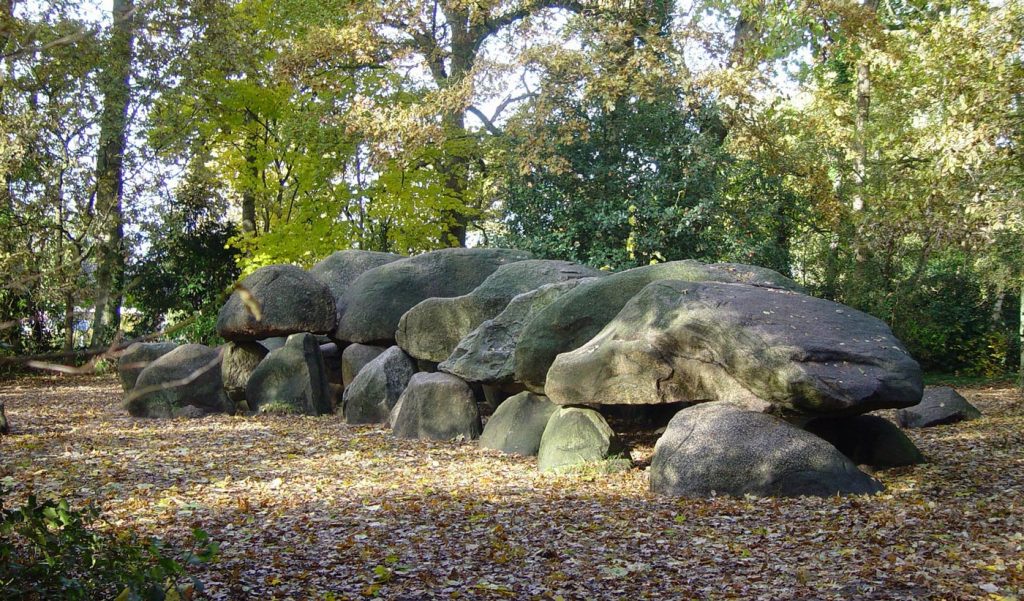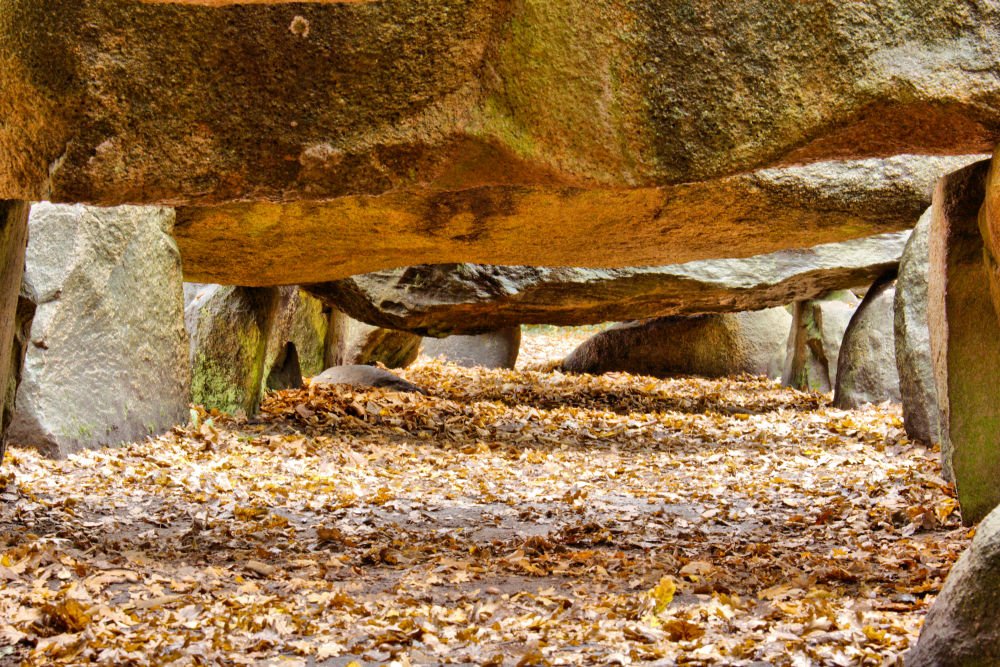Hondsrug (En)

Drenthe is often called the most ancient province in the Netherlands. Prehistory and the Ice Ages also created the beautiful and varied Drenthe landscape of sand and heather, alternating now with woodland, farmland and the remnants of the peat industry.

The SIVO-village of Borger is located on the Hondsrug, a ridge of sand and boulder clay stretching over 50 km from Groningen in the north to Emmen and Coevorden in the south.

Rivers flowing underneath the ice during the Ice Ages created the hills and ridges in the landscape, hence the Dutch name, Hondsrug or ‘Dog’s back’. The ice also transported huge boulders to the area, which the Funnelbeaker people used to construct their hunebeds, the Netherland’s oldest monuments.
Under the trees right outside the museum ‘Hunebed Center’ in Borger is the largest hunebed in the Netherlands. Standing in front of it makes you realise just how big and impressive these ancient monuments are. Every stone is massive and the largest one weighs more than 20 tons. It is difficult to imagine that these stones were brought here by the ice all the way from the south of Finland during the Ice Age about 150,000 years ago.

Many visitors ask how the hunebed builders were able to build such enormous monuments. We think we know how they did it but we cannot be certain. Let your fantasy run riot as you stand before this impressive hunebed and touch the stones. Try to imagine yourself in the world of the tomb builders.
This mysterious monument still conceals many secrets. Over the centuries people have tried, usually illegally, to excavate the site. But the tomb has never been properly investigated so we know very little about it.

